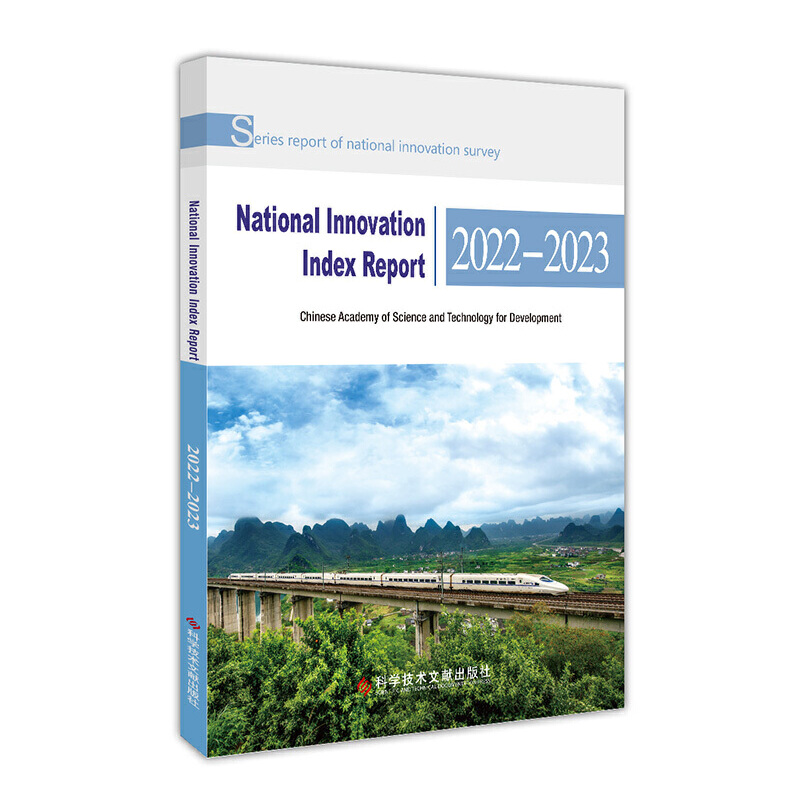
包邮National lnnovation lndex Report

- ISBN:9787523511008
- 装帧:平装-胶订
- 册数:暂无
- 重量:暂无
- 开本:16开
- 页数:136
- 出版时间:2023-11-01
- 条形码:9787523511008 ; 978-7-5235-1100-8
内容简介
Innovation is the primary driving force of development. At present, the COVID-19
pandemic is making a far-reaching impact on the world. Economic recovery is confronted with
serious challenges. Regional conflicts and climate change are aggravating global crises. Science,
technology and innovation (STI) provides important means and ways for countries around the
world to advance development, promote transformation and jointly tackle global challenges.
China places innovation at the center of its national development agenda and vigorously pursues
an innovation-driven development strategy. In 2006, the Outline of the National Program for
Long- and Medium-Term Scientific and Technological Development (2006-2020) put forward
the strategic goal of “improving indigenous innovation capability and building an innovation-Innovation is the primary driving force of development. At present, the COVID-19
pandemic is making a far-reaching impact on the world. Economic recovery is confronted with
serious challenges. Regional conflicts and climate change are aggravating global crises. Science,
technology and innovation (STI) provides important means and ways for countries around the
world to advance development, promote transformation and jointly tackle global challenges.
China places innovation at the center of its national development agenda and vigorously pursues
an innovation-driven development strategy. In 2006, the Outline of the National Program for
Long- and Medium-Term Scientific and Technological Development (2006-2020) put forward
the strategic goal of “improving indigenous innovation capability and building an innovation-
oriented country”. In 2016, the Outline of the National Innovation-driven Development Strategy
set a three-step strategic goal of “entering the ranks of innovation-oriented countries, moving to
the forefront of innovation-oriented countries, and becoming a world STI power”. On this basis,
the 19th National Congress of the Communist Party of China (CPC) further made the strategic
plan to accelerate the building of an innovation-oriented country and a world STI power.
The 20th CPC National Congress made comprehensive plans for the implementation of the
education, science and technology, and talent strategies, and stressed the importance of taking
science and technology as the primary productive force, talent as the primary resource, and
innovation as the primary driving force. It also called for deepening the implementation of the
strategy of developing the country through science and education, the strategy of strengthening
the country through talent, and the strategy of innovation-driven development, in order to open
up new sectors and tracks of development, and cultivate new development drivers and strengths.
In order to monitor and evaluate the progress of building an innovation-oriented country,
the Chinese Academy of Science and Technology for Development has been conducting research
on the National Innovation Index since 2006, and, with the support and assistance of the leaders
and relevant departments of the Ministry of Science and Technology (MOST), as well as public
institutions, and experts and scholars from all sectors, published 11 editions of the National
Innovation Index Report since 2011. The National Innovation Index Report, as one of the reports
of the “national innovation survey system” series prepared in accordance with the Measures for
Implementation of the National Innovation Survey System, is a state-level innovation capacity
evaluation report. According to the research, China’s international ranking of comprehensive
innovation capability rose from the 25th place in 2006 to the 13th place in 2021, and decisive
progress has been made in China’s efforts to build an innovation-oriented country. The results
of the report provided the basis for the government and academic community to correctly
assess China’s innovation progress.
The National Innovation Index Report 2022-2023 is the 12th edition of the series.
Drawing upon domestic and international theories and methods of evaluation of national
competitiveness and innovation capacity, the report is based on an indicator matrix comprising
five pillars, i.e. innovation resources, knowledge creation, enterprise innovation, innovation
performance, and innovation environment. The National Innovation Index consists of five first-
level indicators and 30 second-level indicators.
China is entering a new stage of development, from building an innovation-oriented
country to joining the forefront of innovation-oriented countries, and the clarion call to
building a world STI power has been sounded. Building on the adjustment of the indicator
system in the previous edition, the indicators on innovation environment have been further
optimized in this report: first, enhanced comparability with leading international reports. The
report adopts the survey data of major international institutions that are used in the Global
Innovation Index Report issued by the World Intellectual Property Organization (WIPO) and
other organizations, and introduces new indicators such as “rule of law”, “policy environment
for doing business”, and “quality of market regulation” to present the full picture of a country’s
legal, policy and market regulation environment; second, greater emphasis on international
cooperation and exchanges. The report takes the Network Readiness Index (NRI) developed by
the research team of Cornell University as the basis for evaluating a country’s progress in IT
development; third, more stable data source of international survey indicators. For indicators
such as “availability of venture capital”, “university-industry collaboration in R&D” and
“entrepreneurial culture”, the report draws on the indicators used in international reports that
are long involved in innovation and competitiveness evaluation, and establishes a more reliable
matrix of internationally comparable indicators with optimized data sources.
This report continues to feature 40 countries with active STI activities (whose combined
R&D expenditure accounts for more than 95% of the world), and continues to calculate the
National Innovation Index through the benchmarking method commonly used worldwide.
All data are obtained from the databases and publications of governments or international
organizations and therefore internationally comparable and authoritative. The report is based
目录
作者简介
中国科学技术发展战略研究院是中华人民共和国科技部直属事业单位。 研究院紧密围绕建设创新型国家,提高自主创新能力这条主线,开展前瞻性、全局性和综合性的战略问题研究。 坚持服务于国家、服务于科技事业的方针,努力将战略研究院建设成为能有效支撑科技宏观决策和管理、具有国际一流水平的国家科学技术发展战略研究基地。
-

博弈论
¥10.9¥38.0 -

世界贸易战简史
¥17.9¥52.8 -

曾国藩的经济课
¥24.1¥68.0 -

图解资本论
¥13.0¥46.0 -

思考.快与慢
¥45.9¥69.0 -

国富论
¥9.7¥35.0 -

资本论
¥28.1¥59.8 -

经济学通识-第二版
¥21.3¥58.0 -

旅行社经营与管理
¥28.6¥46.0 -

不公正的胜利
¥26.8¥68.0 -

国家为什么会失败
¥46.0¥75.0 -

金钱心理学:财富、人性和幸福的永恒真相
¥31.8¥56.0 -

贫穷的本质:我们为什么摆脱不了贫穷(修订版)2023新版
¥45.2¥69.0 -

博弈论
¥28.4¥49.8 -

账本里的中国
¥15.4¥48.0 -

美国经济新观察丛书失去的年代:美国债务危机的起因与漫长复苏
¥18.3¥48.0 -

经济学原理
¥17.9¥49.8 -

郎咸平说萧条下的希望
¥12.7¥39.0 -

1949-2009-八次危机-中国的真实经验
¥34.0¥55.0 -

资本论
¥18.6¥49.0











